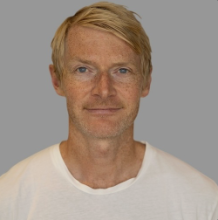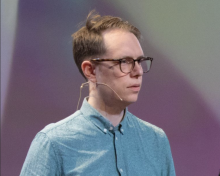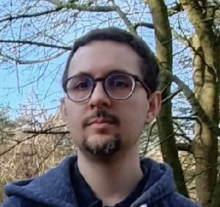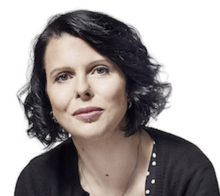Summary
Disclaimer: This summary has been generated by AI. It is experimental, and feedback is welcomed. Please reach out to info@qconlondon.com with any comments or concerns.
The presentation titled "Continuous Delivery Is Not Possible Without Pair Programming: Lessons From SpareBank 1 and SINTEF in Norway" was delivered by Asgaut Mjølne Söderbom and Ola Hast, both senior developers at SpareBank 1. The key points of their discussion are highlighted below:
Introduction
The presentation emphasized the correlation between effective continuous delivery and pair programming. Pair programming became essential as the frequency of deployments increased significantly, from daily to hourly.
- Asgaut Mjølne Söderbom introduced himself as a senior developer with extensive experience, passionate about pair programming and team collaboration.
- Ola Hast discussed his background in architecture and software development, emphasizing simplicity and speed in development.
Main Themes
- Pair/mob programming was key to enhancing development speed, focus, and error reduction.
- The shift to frequent deployments required eliminating the traditional use of pull requests and test environments, leading to improved software quality and developer satisfaction.
- Psychological safety and team collaboration were strengthened through pair programming interventions and a focus on continuous learning.
Implementation Strategies
- Pair programming interventions included booking sessions twice a week and rotating roles to ensure shared knowledge and collaborative work.
- Environmental setup for testing was simplified by reducing reliance on traditional test environments, instead using feature toggles and continuous integration for fast feedback.
- SINTEF collaborated on these interventions, providing scientific evaluations of the methodologies applied.
Results and Reflections
- The approach led to reduced waste in testing processes and strengthened team cohesion.
- The organization saw significant improvements in software quality and deployment efficiency.
- Pair programming helped in building a supportive team environment, where developers shared responsibilities and contributed equally.
Conclusion
The presentation concluded with insights on how pair programming underpins successful continuous delivery, highlighting its role in modern software development and organizational improvement. Continuous adaptation and learning, such as adapting to AI advancements, were noted as crucial for future success.
This is the end of the AI-generated content.
Abstract
In the autumn of 2021, SpareBank 1, one of the largest savings banks in Norway, decided to take a new direction by significantly increasing how often we deployed to production, going from daily to hourly frequency. We quickly experienced something very interesting: it was nearly impossible with this high frequency of deployments without doing pair/mob programming.
This shift proved transformative: it enhanced development speed, focus, and flow while reducing errors. Developers also reported greater satisfaction, frequently citing improved focus and smoother workflows. The quality of delivered software significantly improved and customers got better products.
In this presentation, we will explain how we changed course, how we tested continuous deployment with tiny changes, and how the number of deployments increased dramatically. We will explain why deploying small changes while developing (and not after it is finished) has become crucial if you want to do modern software development.
You will learn about the positive consequences we experienced on reducing use of pull requests and test environments, improved pair/mob programming, quality, focus, flow, psychological safety, and more - without it being a goal in itself.
Furthermore, we will explain how we, together with SINTEF, have done so-called "pair programming interventions" with teams in periods of 3-4 weeks, and successfully introduced pair/mob programming in a successful way.
Interview:
What's the focus of your work these days?
In our day-to-day job, we are software developers in an autonomous team of five people. We both love programming.
Since we started working together, we have constantly been looking for better and more efficient ways of working. From the very beginning, our focus was simple: break everything down into tiny pieces, get fast feedback, reduce waste, work together on everything, and have fun doing it.
We quickly learned that to be able to deploy to production several times an hour, code reviews (and pull requests) had to be done as part of the development process, and not as a handover to someone else. This means pair/mob programming became 100% necessary to keep up flow, focus, and speed. Code reviews and pull requests disappeared as a natural consequence of doing modern software development. TDD became not just meaningful, but necessary. We hardly use test environments anymore; instead, we test locally, on CI, and in production.
We work across the organization to spread the knowledge of how we work, both through coaching and talks. We also work closely with scientists at SINTEF Digital, and we do external talks at conferences and help other companies in Norway.
What's the motivation for your talk at QCon London 2025?
We want to show people that working this way is possible, even though we work in finance and have apps that handle millions of requests per day. We want to demonstrate that it is possible to do modern software development with low stress and a resting heart rate.
How would you describe your main persona and target audience for this session?
Everyone who wants to deliver better software faster, who wants to improve their focus and flow, and who wants to improve their team's psychological safety. The talk does not require a high technical level and should be valuable for everyone from developers to leaders.
Is there anything specific that you'd like people to walk away with after watching your session?
The talk explains explicit, actionable things that all teams can use immediately when they get back to their office. For example, how to start pair programming, how to increase focus, how to split a new feature into small pieces, and deploy to production several times a day.
What do you think is the next big disruption in software?
We do not think we have seen the peak of GenAI, but we do not think it will replace us entirely. Finding ways of working with GenAI without compromising the quality of the code will be crucial. We think that the core methods of software development, like building systems that are easy to maintain and change, will be even more important in the future.
Speaker

Asgaut Mjølne Söderbom
Senior Software Developer @SpareBank 1 Utvikling, Previously Worked @Bouvet, @FINN, and @TietoEVRY, 19+ Years in Software Development
Asgaut Mjølne Söderbom is a senior developer at SpareBank 1 Utvikling, Oslo. He has a Master's degree in Computer Science from the University of Technology, Sydney, Australia.
Asgaut has worked as a developer since 2006. He has previously worked in-house at FINN and TietoEVRY, but also worked several years as a consultant - both independently and at Bouvet. He worked 12 years as a founder and developer in a startup European Travel Group, which was later acquired by HotelOnline Inc.
Asgaut has been passionate about pair programming and team collaboration throughout his career. He is focused on fast feedback loops, continuous learning, flow, focus, code quality, and eliminating waste in the teams he works in. He also works across the organization with coaching - both technically and in agile efficiency. Asgaut has worked closely with SINTEF Digital in their research of efficient teams.
In recent years, Asgaut has given talks both internally and externally, especially around pair programming and frequent deployments to production. Asgaut shares a lot internally within the company he works in and participates in groups trying to improve culture and collaboration. He writes annual articles about his work and how his team is improving in modern software development. Asgaut also works with developers from other organizations to improve his knowledge.
Find Asgaut Mjølne Söderbom at:
Speaker

Ola Hast
Senior Software Developer @Sparebank1 Utvikling, 15 Years in Software Development
Ola Hast is a senior developer at SB1U, Oslo. He has a bachelor's degree in Computer Engineering from Norwegian University of Science and Technology, Trondheim, Norway.
Ola has worked as an architect, developer and tech lead since 2010. He worked as a consultant in both Oslo and Trondheim for several years. In 2018 he joined SB1U. Ola has been a core contributor in both designing and developing some of the most important parts of SB1U´s systems. Ola has worked closely with Asgaut trying to improve culture and collaboration, and done several talks together.
Ola believes in simplicity and speed as guiding principles in architecture and software development, which works well with modern software development techniques such as pair programming and CI/CD.







